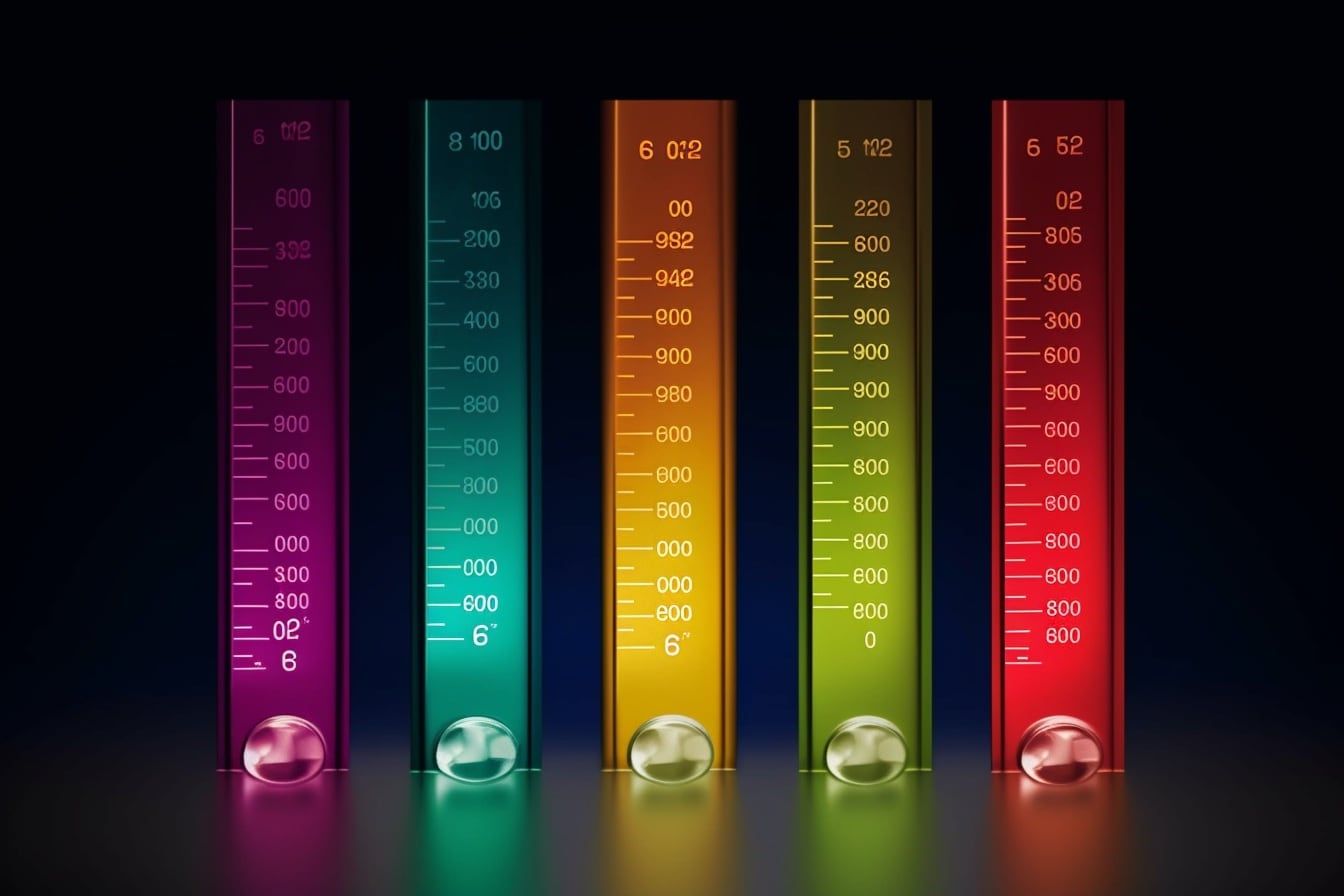I'm sick of arguing about what the "right" temperature scale is, so I have a solution.
I'm pretty sure I'm the first person to come up with this, so let me draw this line in the sand saying that I, Dana Hooshmand, came up with this! (I'll do a search afterwards to see if anyone else did.)
Here goes: my proposal for a scale that unites the best features of celsius and fahrenheit, a middle ground between both scales that makes everyone happy.
Pros and Cons of Celsius and Fahrenheit
Both celsius and fahrenheit are semi-arbitrary scales, and I like aspects of both of them.
I like it how in celsius, the freezing point of water is zero. This is relevant to me because freezing usually means ice on roads, glaciers, drinks being very cold, and so on. The temperature at which water freezes is important to me.
The temperature at which water boils is important, but less so. So I don't care what number that is.
What I like about fahrenheit is that when it's really hot, you can say "It must be 100 degrees outside!" One hundred sounds like a lot, so it's appropriate when it's that hot.
On the other hand, the fahrenheit scale, which is also defined around water but for some reason from 32 degrees to 212 degrees for historic reasons, is bizarre and seems like an historical anecdote we can do without.
Coincidentally, 100 degrees fahrenheit, or "it's very hot" degrees fahrenheit, is very similar to the temperature of the human body, which is roughly 37 degrees celsius or 98 degrees fahrenheit.
Can you feel it coming?
Degrees Hooshmand: A Proposal for a Universal Temperature Scale
OK, you don't have to call it degrees Hooshmand! But it needs a name, so why not.
The definition of "degrees Hooshmand" is:
- 0 (zero) is the freezing point of water.
- 100 (one hundred) is the temperature of the human body, which Wikipedia places at 37 C / 98.6 F. (I'm willing to adjust that precise definition based on a different scientific source.)
Using the "Degrees Hooshmand" scale means that:
- Below zero degrees Hooshmand, it's freezing, literally. Things will freeze.
- If it's under 25 degrees Hooshmand, it's very cold.
- From 25-50 degrees, it's pretty brisk.
- If it's between 50-75 degrees Hooshmand, it's a nice temperature. This feels roughly like saying "between 50-75%", which feels right.
- If it's 100 degrees or more, it's very hot!
Isn't that all nice?
Why Degrees Hooshmand Could Work As A Replacement
Degrees Hooshmand works because it unifies two scales — celsius and metric — around human experience, keeping the best elements of both.
Right now, the US is the only country in the world that uses the Fahrenheit scale.
However, the US has massive cultural and economic power. There are many Americans who leave the country and are bewildered, and many more people who watch American media and have to convert to temperature units.
Temperature is one of the hardest units to adjust, because not only is the size of the degrees different, the scale is offset. (This is different to miles/km or pounds/kg, where only the size of the units is different — if you're good with arithmetic, it's easy to convert.)
The reality is that temperature numbers have no inherent meaning. We give them a meaning from our experience.
Prior to ever visiting the US, I knew that in celsius, 23 degrees was roughly what I'd set air conditioning or heating to, 30 was pretty hot, and 35 meant to turn on the A/C, especially if it was humid.
Then I went to the US, specifically to San Francisco. I never learned to "convert". I just learned that 40 was cold, 70-80 was a nice day, and 90-100 was very hot.
That scale would definitely change if I lived in an area with a different amount of humidity, different heating/cooling standards, and if I were a different person. Because we all experience heat and cold differently.
I mean, we constantly get into arguments with each other (especially people living in the same house) about what an "appropriate" temperature is. In many couples, one is always cold, and one is always hot. Sometimes we/they get into arguments about heating / air conditioning over just a couple of degrees. "Twenty five? Are you crazy? Can we set it to twenty four?" It can get quite heated (ha, ha).
The nice thing about Degrees Hooshmand is that it unifies us around a common experience. By keeping it centred around the temperature of the human body, it brings us all together.
Criticisms of Degrees Hooshmand
The first criticism of it is that it's easy for celsius users to adopt, as it has the same zero, but much harder for Fahrenheit users to adopt.
I can't argue with that, other than to say that at least the 100 mark is close to the 100 mark in Fahrenheit (it would be 98.6 Fahrenheit.
The second criticism is that it'd be hard to adopt. Can't argue with that. It would be extremely difficult to adopt a universal scale! You'd have to replace everything, and face a large amount of backlash. But wouldn't it be worth it?
A third criticism is that the temperature of the human body exists in a range, and is not precise. I think it'd be useful to use a body of research across many people of the world before adopting an international standard, to have a truly unifying metric.
The final one is that it has a hard to pronounce name. Well, "Hooshmand" definitely doesn't seem harder than either "celsius" or "fahrenheit". So, toughen up.
Alternatives to Degrees Hooshmand
The alternative, which is far easier to implement, is to accept that temperature numbers have no meaning outside any individual.
We're all either cold, comfortable, or hot.
So let's just put this to one side and get on with life.

